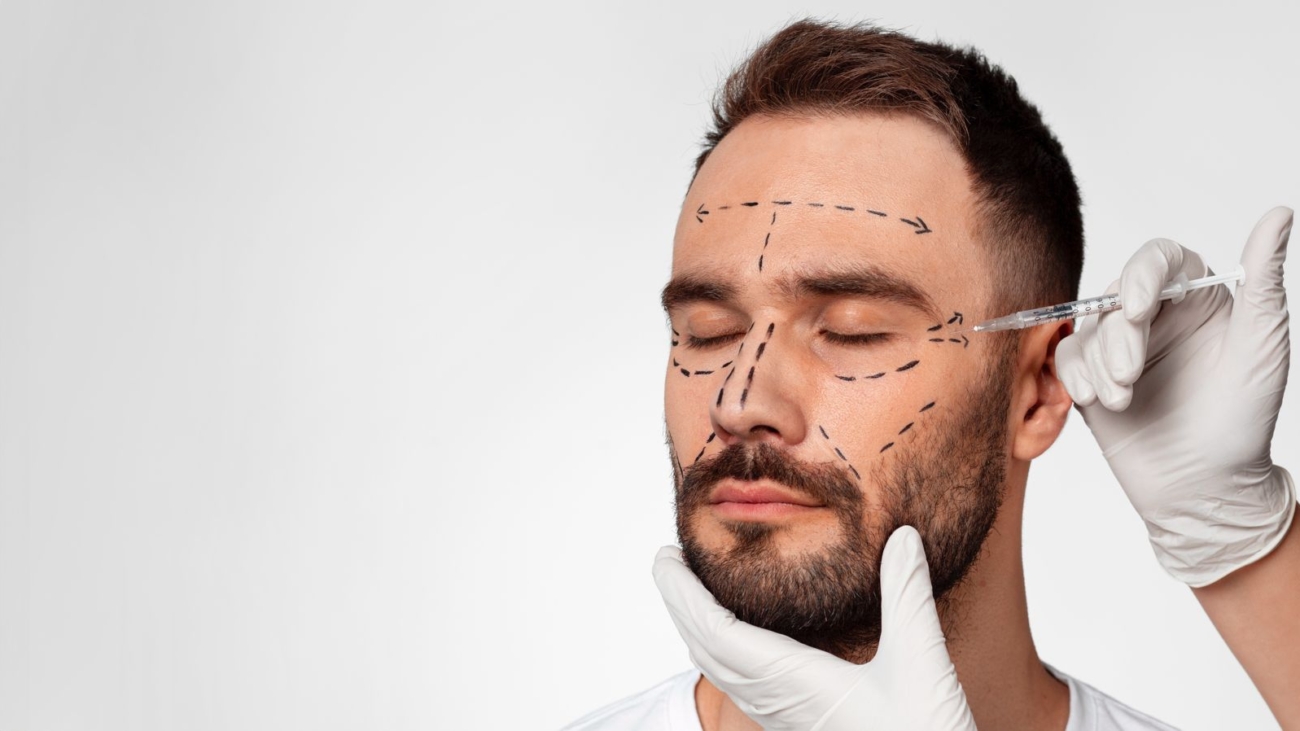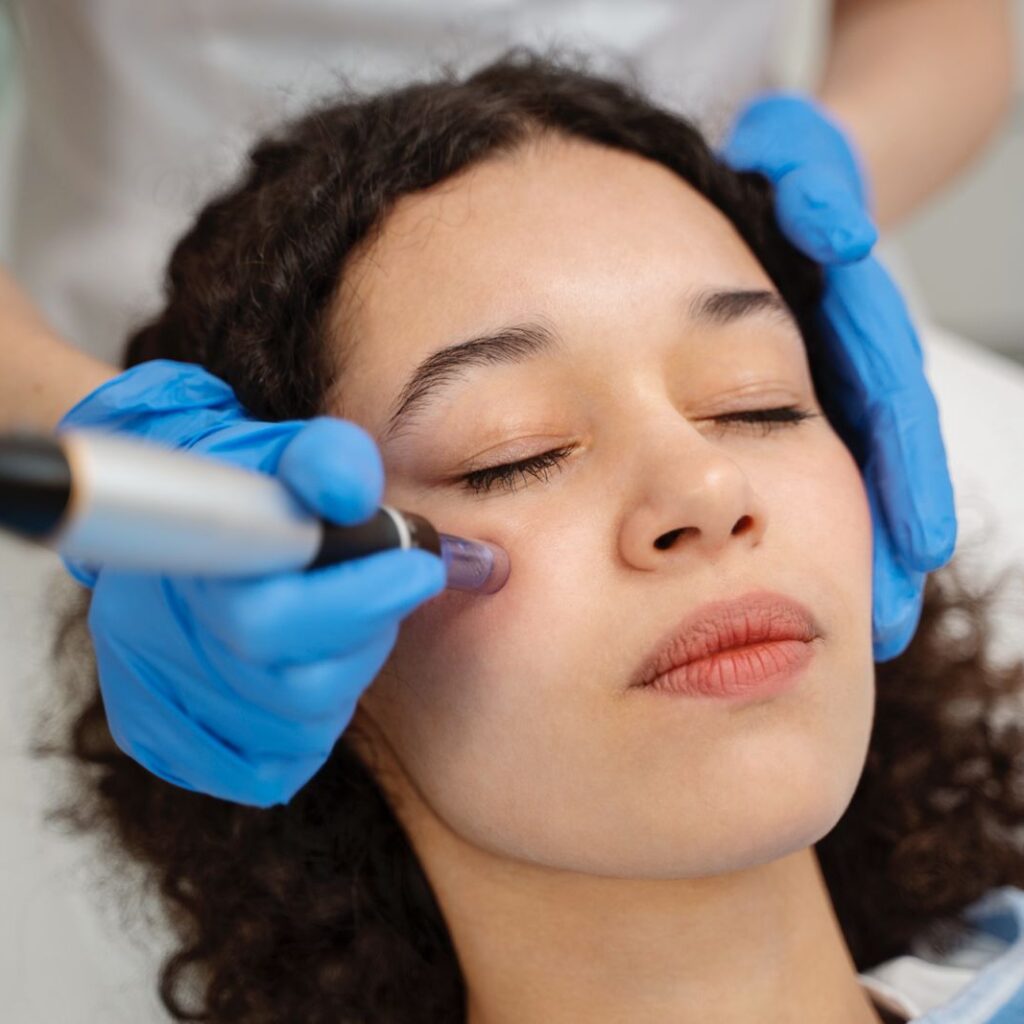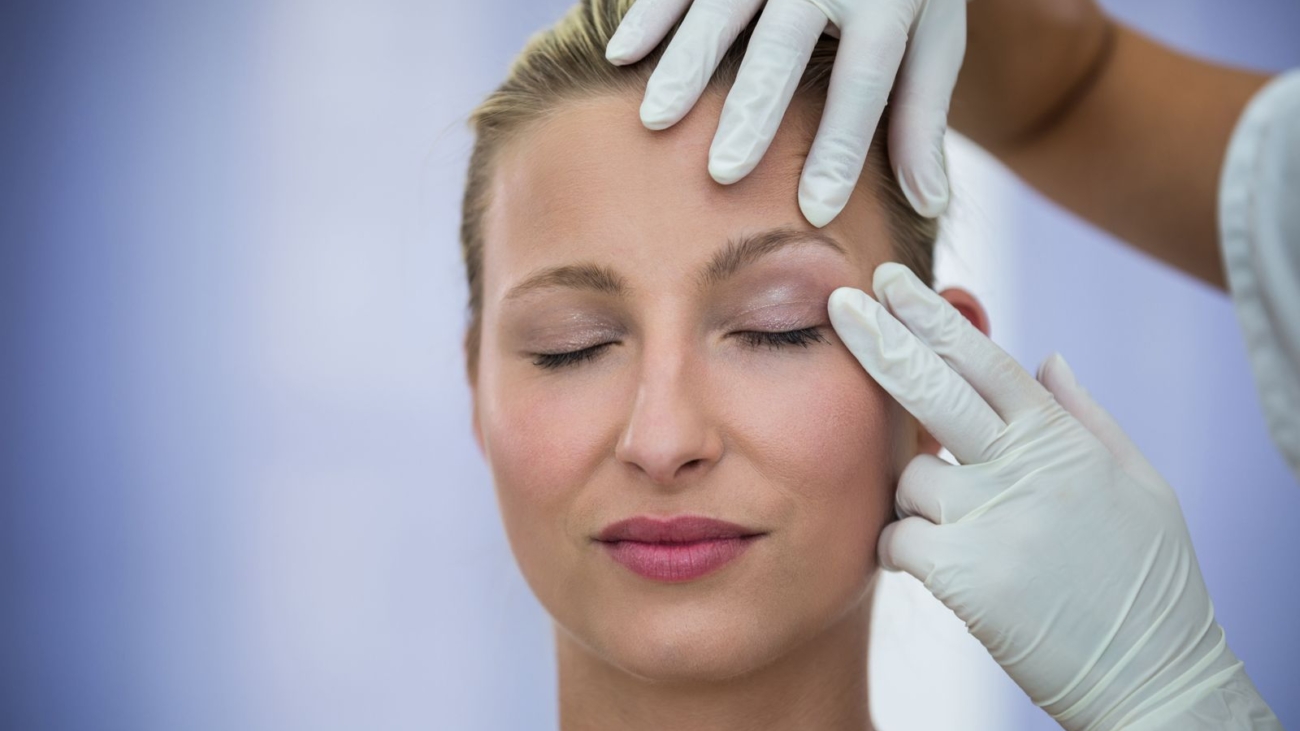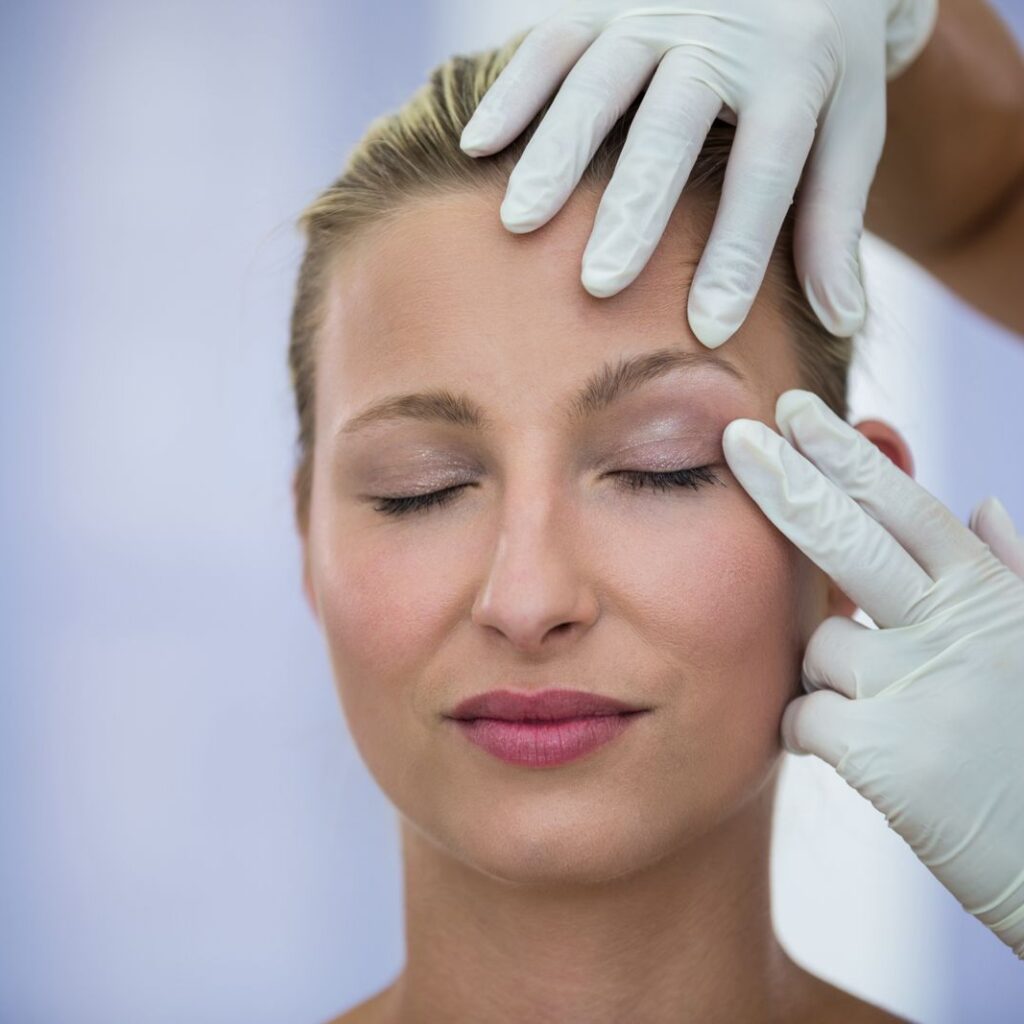Horizontal forehead creases and frown lines between the eyebrows are often the first signs of facial aging we notice when looking in the mirror. While these lines are fleeting expressions in our youth, over time, they become permanent companions. Factors such as sun exposure, stress, smoking, and dehydration further worsen the condition, making the wrinkles deeper and more noticeable.
When we talk, express surprise, frown, or raise our eyebrows, the frontalis muscle constantly contracts, creating folds in the skin. In our twenties and early thirties, these folds quickly smooth out thanks to abundant collagen and elastin in the skin. After the age of thirty, the production of these proteins declines, and facial expressions leave lasting ‘imprints’—deep creases that make the face look tired, angry, older, and harsher.
Botulinum toxin (best known by the brand name Botox) has been proven to be the safest and most effective non-surgical method to temporarily relax these muscles and smooth out wrinkles, often with stunning success.
Botulinum toxin works both preventively (by reducing frontalis muscle activity to prevent new deep wrinkles) and correctively. In younger patients, it can prevent the formation and deepening of wrinkles, while in older individuals, it significantly reduces existing lines, restoring a more youthful appearance.

How Does Botulinum Toxin Work on the Forehead?
Botulinum toxin type A (commonly known as Botox) is a purified neurotoxin refined to pharmaceutical-grade purity. When injected in minimal aesthetic doses at specific points, it temporarily blocks the connection between nerves and muscle fibers, preventing the excessive contraction of muscles responsible for wrinkle formation.
On the forehead, it is strategically injected into the frontalis muscle, preventing it from fully contracting. As a result, the muscle can no longer ‘crease’ the skin as strongly, leading to the smoothing out of folds and significantly reducing or even eliminating the appearance of horizontal forehead lines and frown lines between the eyebrows (also known as glabellar lines).
It’s important to note that with precise dosing and proper injection techniques, subtle softening is achieved without completely ‘freezing’ facial expressions — meaning the eyebrows can still move naturally, but without creating deep furrows across the forehead.
The Benefits of a Non-Surgical Forehead Lift with Botox
Unlike a traditional surgical forehead lift, which involves incisions and a lengthy recovery period, Botox offers a quick, non-invasive solution with virtually no downtime. The procedure typically takes just 10 to 15 minutes, and patients can return to their normal activities immediately afterward.
Results begin to develop within 3 to 5 days, with full improvement visible after about two weeks. Since there’s no need for deep anesthesia or stitches, there is no risk of scarring, and complications are extremely rare when the treatment is performed by a qualified professional.
Step-by-Step Treatment Process
- Consultation and Assessment:
The specialist evaluates the depth of the wrinkles, muscle strength, and facial proportions to determine the ideal number of botulinum toxin units and the exact injection sites. - Skin Preparation:
After cleansing and disinfecting the skin, a numbing cream is applied to the forehead to ensure the procedure is completely comfortable for the patient. - Injection:
Using fine needles, botulinum toxin is injected into 4–6 pre-marked points across the forehead. Patients may feel slight pinching or stinging sensations, but the treatment is virtually painless. - Finishing Touches:
A gentle soothing gel may be applied to the skin after the injections. Patients are given detailed aftercare instructions, either verbally or in written form.
Since the entire procedure typically takes only 10–20 minutes, Botox treatments are often referred to as a ‘lunch-break procedure’ — meaning it won’t take much time out of your day.
What to Expect After the Treatment
Common side effects include mild redness, slight swelling, or minor bruising at the injection sites, all of which usually resolve within a few hours to a few days. Less commonly, some patients may experience mild headaches or a feeling of pressure.
For the first 4–6 hours after the treatment, it’s recommended to remain seated or upright and to avoid touching the treated areas. Strenuous physical activities, sauna sessions, and sun exposure should be avoided for at least 24 to 48 hours to prevent unwanted migration of the Botox and to minimize swelling.
Duration of Botox Effects on the Forehead and How to Maintain Results
The effects of Botox on the forehead typically last between 3 and 6 months, depending on the strength of the muscles and the patient’s metabolic rate. After that period, muscle activity gradually returns, and wrinkles may reappear in a softer, less pronounced form. With regular maintenance treatments, it is possible to keep the forehead smooth, prevent the deepening of lines, and even delay the formation of new wrinkles, especially in younger patients.
The treatment is not recommended for pregnant or breastfeeding women, individuals with neuromuscular disorders, or those allergic to any components of the product.
Botulinum Toxin for the Forehead Is the Best Solution — But What About Frown Lines?
Botulinum toxin can also effectively treat frown lines between the eyebrows, which often make us appear angry or tense. If the creases have become static (visible even without facial movement), Botox injections can be combined with hyaluronic acid fillers.
Botulinum toxin relaxes the muscles, while fillers restore lost volume. This combination can successfully smooth out deep frown lines, and results can last from 6 months up to a year.
Book a Consultation at Our Clinic and Take the First Step Toward Smooth, Radiant Skin!




